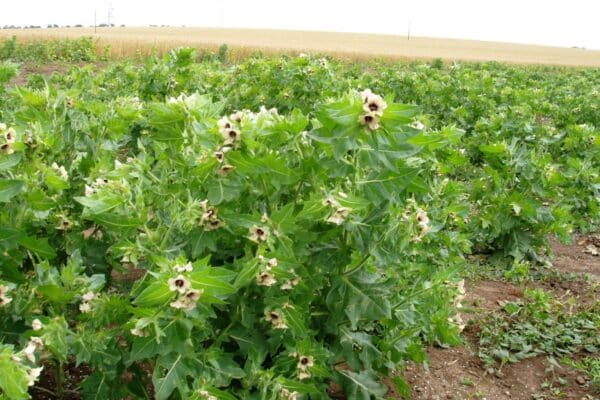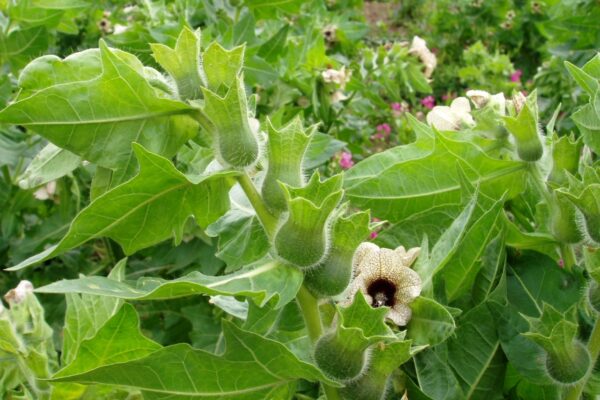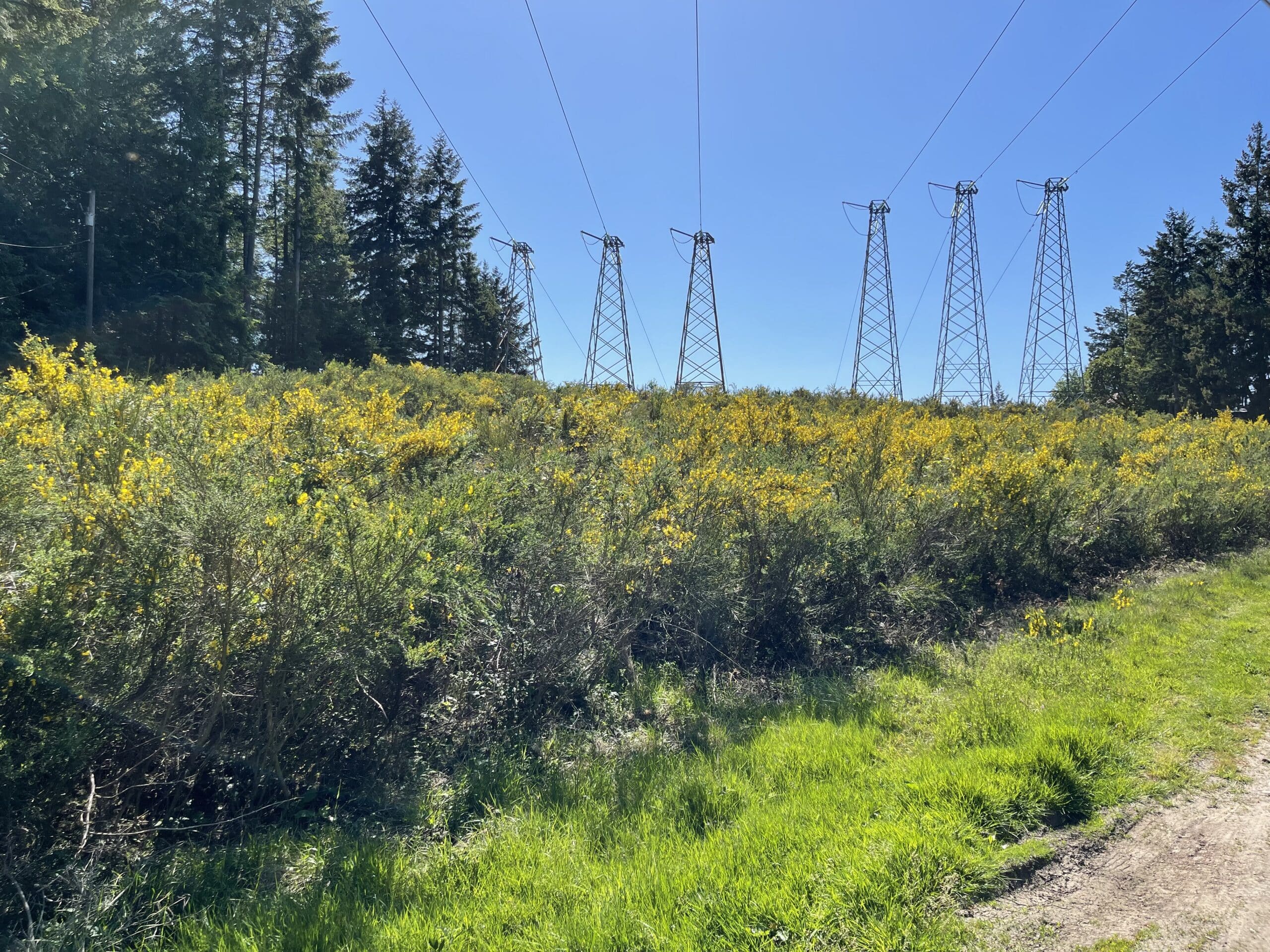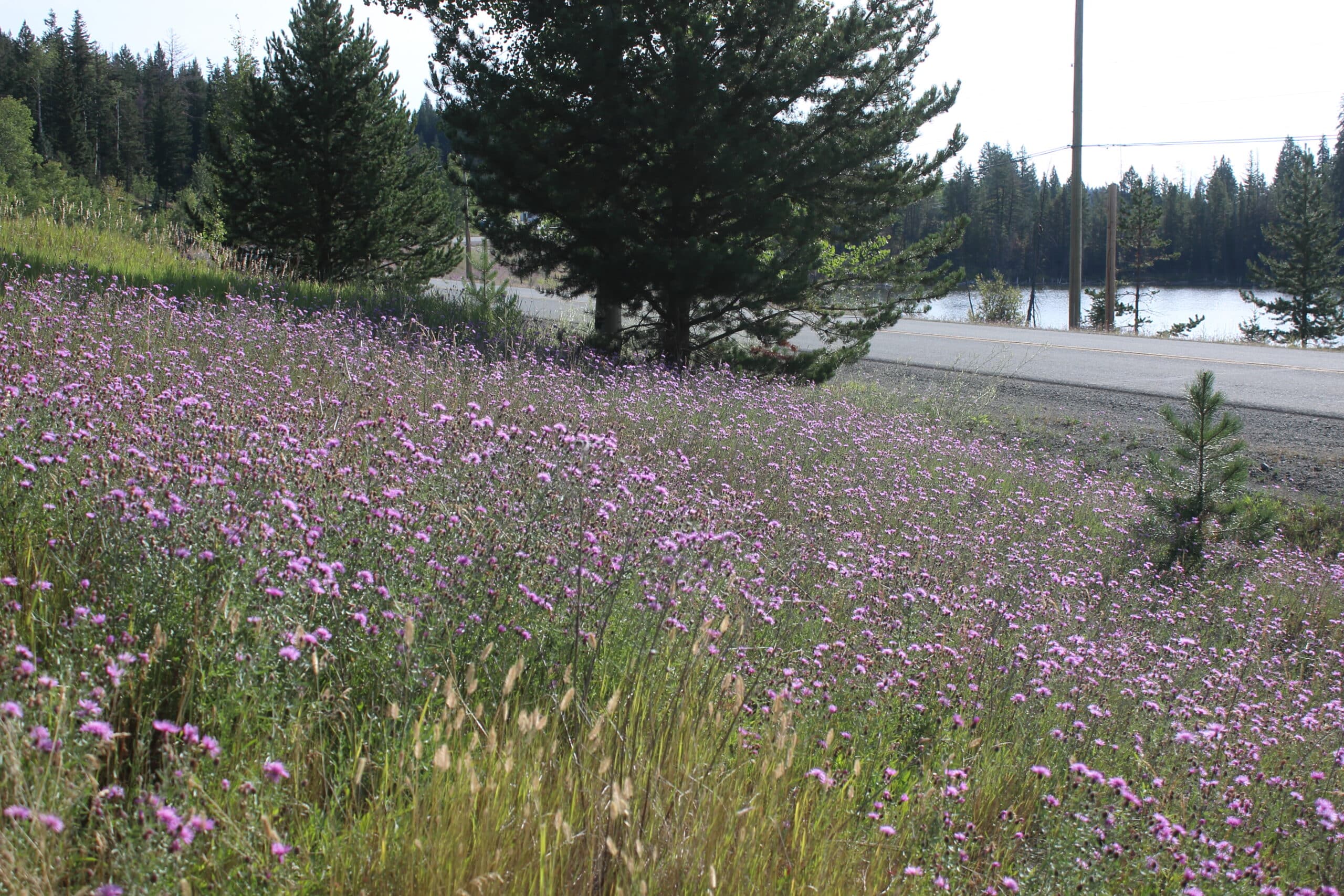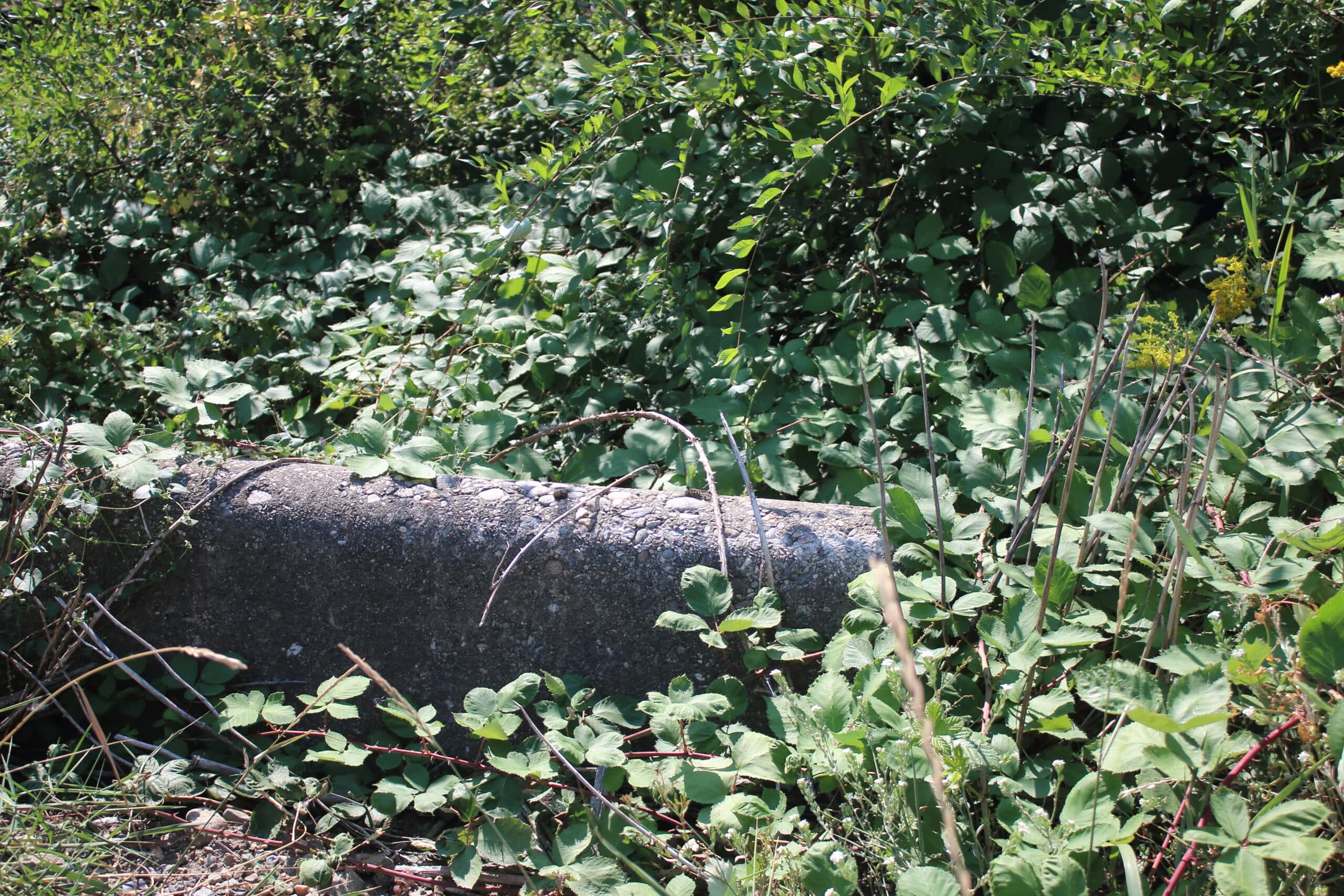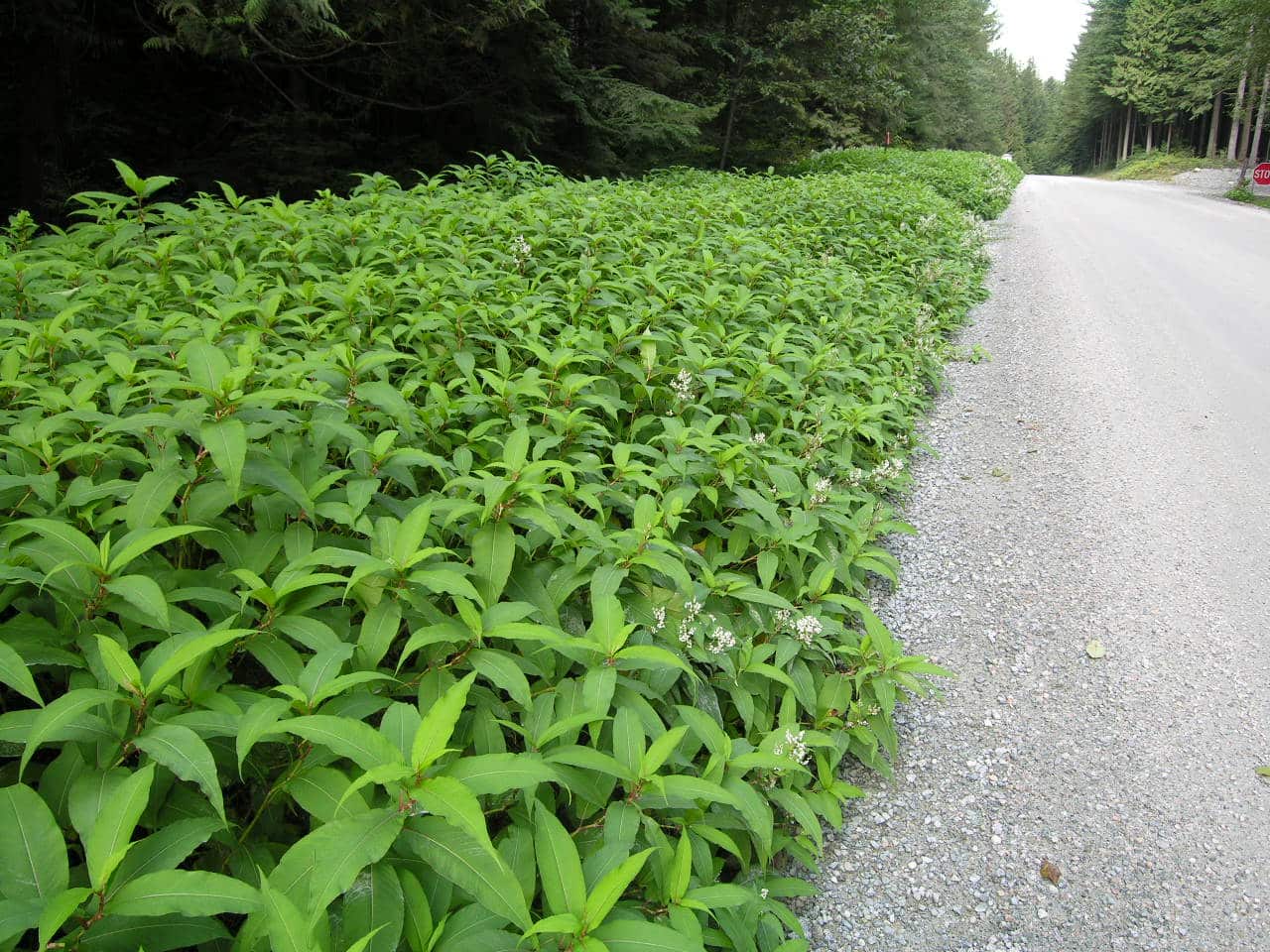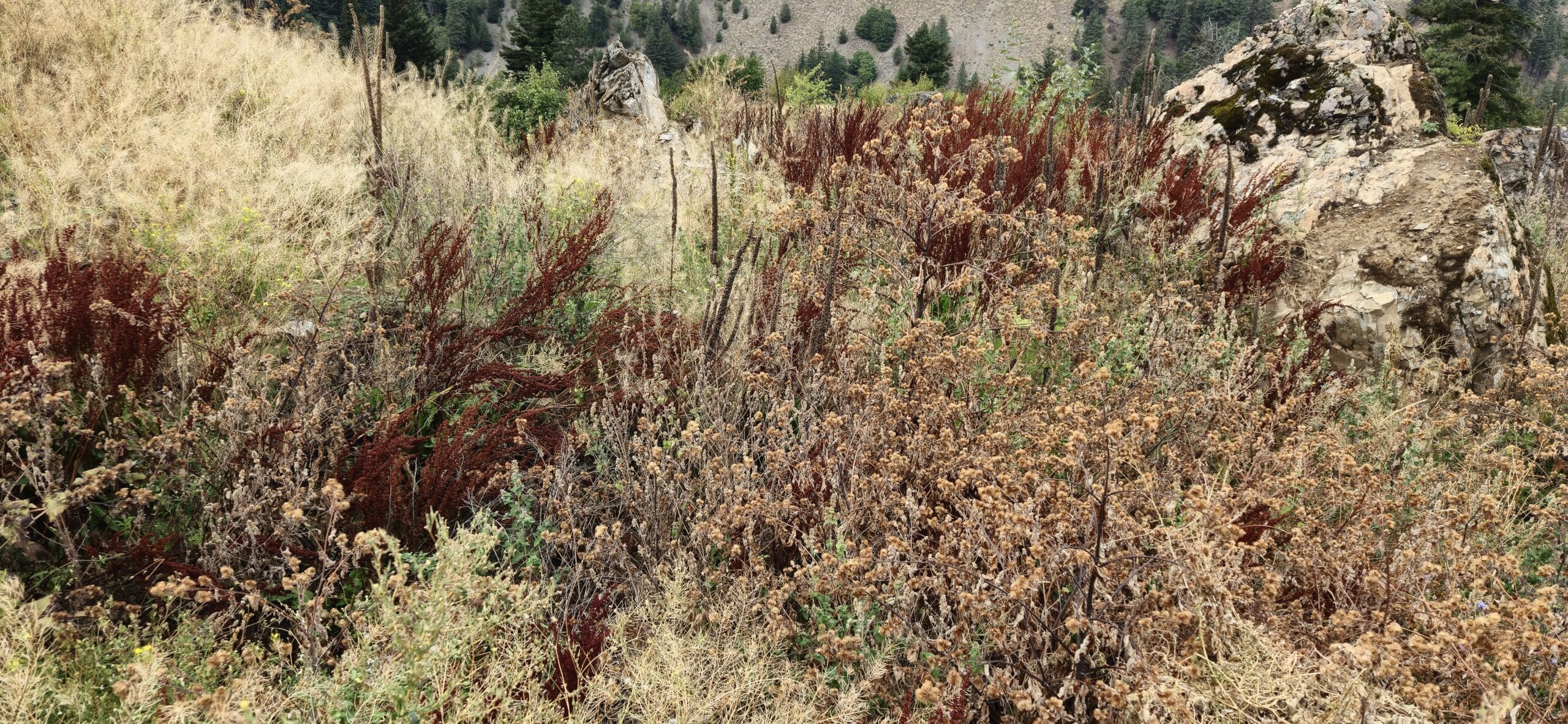Black henbane
Warning
Black henbane contains toxins harmful to humans and animals if ingested
About This Species
Black henbane, native to the Mediterranean region, was introduced to North America as an ornamental and medicinal plant. It’s a resilient species that can thrive in various environments and be found in disturbed sites, rangelands, croplands, roadsides, and riparian areas.
Why does black henbane spread so easily? Just one plant can produce an astounding 10,000 to 500,000 seeds! These seeds can spread quickly and far. It also produces dense stands that crowd out native vegetation and reduce forage for livestock and wildlife.
Black henbane produces a foul odour and contains toxins harmful to humans and animals if ingested.
How to Identify
Black henbane can be an annual or biennial, growing up to one metre tall. The stems are upright, thick, and almost woody.
The flowers are funnel-shaped with five lobes and brownish-yellow with dark purple veins.
The leaves are large, up to 20 cm long and 15 cm wide, with shallowly lobed edges. They grow in an alternate pattern and are covered in fine, sticky hairs.
Take Action
Prevention is the best approach.
If you need advice about invasive species on your property or you are concerned about reported invasives in your local area, contact your local government or regional invasive species organization.
-
If you need advice about invasive species on your property or you are concerned about reported invasives in your local area, contact your local government or regional invasive species organization.

PlayCleanGo
Learn about best practices

Plantwise
Learn about best practices
REPORT TO PROTECT BC’S BIODIVERSITY

Use the app
Observe and report to protect BC’s biodiversity

Report through this website
Use our form to tell us what you’re seeing and where.




